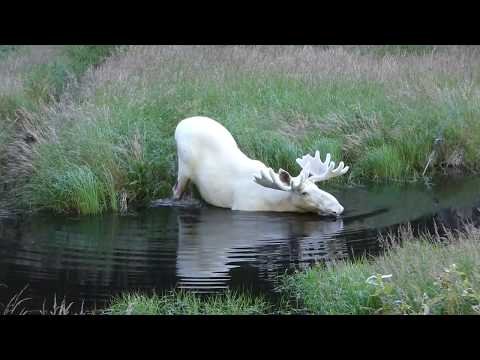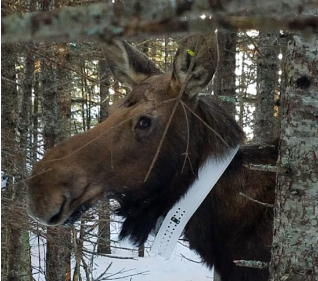

Tycho Brahe was an enormously rich 16th-century Danish astronomer, was well known for his pet moose that accompanied him everywhere and developed a strong taste for beer, eventually becoming so intoxicated at a party that it fell down a flight of stairs and died from subsequent injuries. Moose attack more people annually than bears and wolves combined. When he reported the calf to local authorities they shot the baby and blew up the carcasses of it, it’s dead mother and sibling to prevent grizzly bears from being drawn to the area. On May 25th, 2015 a man discovered an orphaned baby moose in Yellowstone National Park in Montana. There is a “moose test” in Sweden, which requires all cars to be able to evade a moose without flipping, should one suddenly appear on the road.

The findings give state and tribal managers new information to consider in drafting and implementing herd and wolf management plans in Minnesota and beyond.6. Because brainworm is such an important cause of adult moose mortality in Minnesota, we can now see that the impact of wolves on moose is a bit more nuanced.” Adult moose, especially the bulls are large and formidable as prey, most predators choose to hunt the smaller females, especially if they are with a calf or. “But this suggests that wolves may provide a protective benefit to adult moose from a parasite-transmission perspective. “We often think of wolves as bad news for moose because they kill a lot of calves,” said principal investigator Tiffany Wolf, DVM, Ph.D., an assistant professor in the Department of Veterinary Population Medicine. Researchers captured and tracked 94 adult moose, 89 deer (65 adults) and 47 adult wolves during the 2007–2019 study period. The study was conducted in and around the Grand Portage Band of Lake Superior Chippewa Indian Reservation in Cook County, where U of M and Grand Portage researcers have been studying moose in an effort to understand and reverse a long-term moose population decline. Eventually, most moose succumb to the effects of the parasite. Unlike with white-tailed deer, where the worm is content to reside just outside the brain, with moose, the worm burrows into the brain, gradually consuming portions of it. Moose accidently ingest the snails as they browse on forest plants, and once ingested, the developing larvae migrate toward the moose’s brain. The deer droppings are subsequently fed on by land snails, which ingest the larvae.

White-tails expel brain worm larvae through their feces. The brain worm is harmless to white-tailed deer, since the parasite spends its life in a host white-tail residing in the tissue immediately surrounding the animal’s brain. This is a time when rutting moose are seen more often because they are actively seeking a mate. The breeding season (rut) for moose runs from September to October. More segregation leads to less opportunity for moose to contract the brain worm. Unlike deer, moose offspring stay close to their mother after birth and she will actively protect her calf against predators. Increased predation pressure from gray wolves, it turns out, had the effect of increasing the segregation of deer and moose across their various habitats.

During spring migration and during summer, the two species are more likely to intermingle the study found- and that’s when moose are most likely to fall victim to brain worm infection. While moose and white-tailed deer generally spend their time in different habitats, both species demonstrate some seasonal migration, especially ahead of winter. This concentrated food source limits the amount of time cows spend feeding, which limits calfs vulnerability to predators. While the antlers of bull moose appear to be their strongest weapons, their hooves are. Despite common hunting (which increased when explorers started colonizing north america) the numbers of wild moose remain strong. They are also hunted by humans for trophies and meat. That’s a significant impact to the region’s moose population, but it’s an impact that pressure from gray wolves may actually help to reduce. Predators include wolves, black bears and grizzly bears. Indeed, 23 percent of collared moose that died in northeastern Minnesota over the past 15 years were infected with the brain worm. Researchers have studied the predatorprey dynamics on Isle Royale. The brain worm, which is carried by white-tailed deer, is a significant contributor to adult moose mortality. Landmark project celebrates 50 years of tracking wolves and moose on a protected archipelago in Michigan's Lake Superior. A new study published last month by University of Minnesota and Grand Portage Band researchers suggests that wolf pressure can actually help to reduce the incidence of the parasitic brain worm, known as P. REGIONAL- It turns out that gray wolves may not be all bad when it comes to northeastern Minnesota’s moose population.


 0 kommentar(er)
0 kommentar(er)
